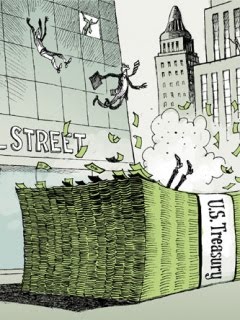Value investing involves investing in companies that are worth less than their intrinsic value. This involves buying companies which provide a good margin of safety.
The strategy I have used during my dissertation is based on Graham, Zweig & Buffett (2003).
Buying
In general:
- The size of the company must be adequate, that is, in terms in turnover which must be at least £30m ($50m).
- Sufficiently strong financial condition. Current ratio must be at least equal to 2.
- Continued dividends for the at least the previous 20 years.
- No earnings loss for the previous 10 years.
- 10 year earnings per share (EPS) growth must be at least 1/3 using 3 year averages at the beginning and end of the 10 year period.
- Price to book value (P/BV) must be at most 1.5.
- Average price to earnings (P/E) must be at most 15 for the previous 3 years.
For defensive strategy:
- As in general, the size of the company must be adequate. However, turnover which must be at least £70m ($100m) for manufacturers and at least £30m ($50m) for utilities.
- Net current assets must be at least twice the amount of current liabilities (Current ratio of at least equal to 2). For manufacturers, long term debt (those due in more than 1 year) should be less than net current assets. For utilities, debt should less than twice net asset
- Continued dividends for the at least the previous 20 years.
- No earnings loss for the previous 10 years.
- 10 year earnings per share (EPS) growth must be at least 1/3 using 3 year averages at the beginning and end of the 10 year period.
- Price to book value (P/BV) must be at most 1.5.
- Average price to earnings (P/E) must be at most 15 for the previous 3 years.
- Current assets at least 1.5 times current liabilities (Current ratio of 1.5). For manufacturers, debt must be at most 110% of net current assets. Replaces criteria 2.
- No earnings loss for the previous 5 years.
- Some dividends paid.
- Market capitalisation less than 120% of net tangible assets.
Selling
Only sell when the situation changes to the extent that the company no longer satisfies the above criteria. I am usually flexible depending on a company's situation.
Notes:
Notes:
- Exchange rate between the pound and the US dollar is used at the time of the publication of the source.
- For periods less than stated periods above, use 5 year periods instead. This is because some sources only show data for the previous 5 years.
Source: Graham, B., Zweig, J., & Buffett, W. E. (2003). The Intelligent Investor: The Definitive Book on Value Investing (Revised ed.). New York: Harper Business Essentials.






No comments:
Post a Comment